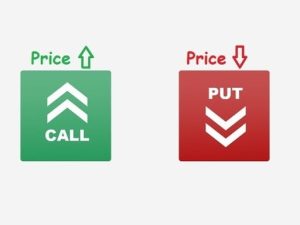Influencer marketing has grown in popularity and effectiveness as a means for brands to reach and engage their target consumers. In the era of social media, influencers may reach a huge and diversified audience of followers, and their recommendations and endorsements hold enormous weight with customers.
However, the concept of influencer marketing has a long history that predates the rise of social media. One of the earliest forms of influencer marketing can be traced back to the practice of celebrity and athlete endorsements, which have been used by brands for decades to promote their products and services. Celebrities and athletes have long been used as spokespeople and ambassadors for brands, and their endorsements have been seen as a way to lend credibility and appeal to the products and services being promoted. As the internet and social media have evolved, the concept of influencer marketing has also evolved. With the rise of platforms like YouTube, Instagram, Facebook and TikTok, individuals with large and mainly dedicated followings on these platforms have become known as influencers and have the ability to promote products and services to a wide and diverse audience.
In Bangladesh, the influencer marketing industry is still in its infancy but rapidly growing and evolving. It is estimated that the size of the influencer industry in Bangladesh is roughly only $140 million, but the size of the influencer market across the globe is currently somewhere around a whopping $16 billion. Evidently, this shows how little the influencer marketing industry has been exploited in Bangladesh. However, brands and influencers in Bangladesh in recent years have begun to leverage influencer marketing as a major marketing strategy as they see its economic and other associated potentials. This is a trend that is expected to continue in the foreseeable future.
One opportunity for brands in Bangladesh is to collaborate with local influencers. While many international brands have found success working with influencers from around the world, there is a growing trend towards working with local influencers who have a strong connection to their community and can provide a more authentic and relatable voice for the brand. By partnering with local influencers, brands can tap into the unique culture and perspectives of Bangladesh and better connect with their target audience.
Another opportunity for brands in Bangladesh is to focus on micro and mid-tier level influencers. While big-name influencers with millions of followers can be effective, they can also be expensive and may not be as relevant to certain target audiences. micro and mid-tier level influencers, on the other hand, have a more focused and dedicated following within a specific industry or interest area, which can make their recommendations and endorsements more powerful and credible. By partnering with micro and mid-tier level influencers, brands can more effectively reach and engage with specific segments of their target audience. This kind of collaboration has been effective for both micro and mid-tier level influencers and relatively smaller firms with modest financial incentives, which have successfully reached their intended audiences.
Brands in Bangladesh can also take advantage of the growing popularity of social media platforms in the country. With a large and growing number of users on platforms like Facebook, Instagram, and TikTok, brands have a wide range of opportunities to reach and engage with their target audience through influencer marketing. By working with influencers on these platforms, brands can create content that resonates with their audience and drive meaningful engagement and brand awareness.
Finally, brands in Bangladesh can leverage the power of influencer marketing to drive e-commerce sales. With the increasing popularity of online shopping in Bangladesh, influencers can play a key role in driving traffic and sales to a brand’s online store. By partnering with influencers and creating compelling content that showcases a brand’s products, brands can drive conversions and boost sales.
To conclude, the influencer marketing industry in Bangladesh is still at its inception, but it is expanding and transforming at a breakneck pace. Brands can leverage a variety of new options, including working together with local influencers, concentrating on micro and mid-tier level influencers, making use of social media platforms, and increasing sales through e-commerce. Brands in Bangladesh may successfully reach and engage with their target audience, as well as produce substantial business results, by utilizing the power of influencer marketing and harnessing its potential.
However, the concept of influencer marketing has a long history that predates the rise of social media. One of the earliest forms of influencer marketing can be traced back to the practice of celebrity and athlete endorsements, which have been used by brands for decades to promote their products and services. Celebrities and athletes have long been used as spokespeople and ambassadors for brands, and their endorsements have been seen as a way to lend credibility and appeal to the products and services being promoted. As the internet and social media have evolved, the concept of influencer marketing has also evolved. With the rise of platforms like YouTube, Instagram, Facebook and TikTok, individuals with large and mainly dedicated followings on these platforms have become known as influencers and have the ability to promote products and services to a wide and diverse audience.
In Bangladesh, the influencer marketing industry is still in its infancy but rapidly growing and evolving. It is estimated that the size of the influencer industry in Bangladesh is roughly only $140 million, but the size of the influencer market across the globe is currently somewhere around a whopping $16 billion. Evidently, this shows how little the influencer marketing industry has been exploited in Bangladesh. However, brands and influencers in Bangladesh in recent years have begun to leverage influencer marketing as a major marketing strategy as they see its economic and other associated potentials. This is a trend that is expected to continue in the foreseeable future.
One opportunity for brands in Bangladesh is to collaborate with local influencers. While many international brands have found success working with influencers from around the world, there is a growing trend towards working with local influencers who have a strong connection to their community and can provide a more authentic and relatable voice for the brand. By partnering with local influencers, brands can tap into the unique culture and perspectives of Bangladesh and better connect with their target audience.
Another opportunity for brands in Bangladesh is to focus on micro and mid-tier level influencers. While big-name influencers with millions of followers can be effective, they can also be expensive and may not be as relevant to certain target audiences. micro and mid-tier level influencers, on the other hand, have a more focused and dedicated following within a specific industry or interest area, which can make their recommendations and endorsements more powerful and credible. By partnering with micro and mid-tier level influencers, brands can more effectively reach and engage with specific segments of their target audience. This kind of collaboration has been effective for both micro and mid-tier level influencers and relatively smaller firms with modest financial incentives, which have successfully reached their intended audiences.
Brands in Bangladesh can also take advantage of the growing popularity of social media platforms in the country. With a large and growing number of users on platforms like Facebook, Instagram, and TikTok, brands have a wide range of opportunities to reach and engage with their target audience through influencer marketing. By working with influencers on these platforms, brands can create content that resonates with their audience and drive meaningful engagement and brand awareness.
Finally, brands in Bangladesh can leverage the power of influencer marketing to drive e-commerce sales. With the increasing popularity of online shopping in Bangladesh, influencers can play a key role in driving traffic and sales to a brand’s online store. By partnering with influencers and creating compelling content that showcases a brand’s products, brands can drive conversions and boost sales.
To conclude, the influencer marketing industry in Bangladesh is still at its inception, but it is expanding and transforming at a breakneck pace. Brands can leverage a variety of new options, including working together with local influencers, concentrating on micro and mid-tier level influencers, making use of social media platforms, and increasing sales through e-commerce. Brands in Bangladesh may successfully reach and engage with their target audience, as well as produce substantial business results, by utilizing the power of influencer marketing and harnessing its potential.
References
Sanders, R. (2022) The 5 types of influencers you need to know [2022 edition], Simplilearn.com. Simplilearn. Available at: https://www.simplilearn.com/types-of-influencers-article#:~:text=Mega%2Dinfluencers%20with%20more%20than,with%2010K%20to%2050K%20followers (Accessed: December 22, 2022).December, M.B. and Billah, M. (2022) The rise of the ‘influencer’ market in Bangladesh, The Business Standard. Available at: https://www.tbsnews.net/long-read/rise-influencer-market-bangladesh-546854 (Accessed: December 22, 2022).
Nabi, R. (2022) The growth of the influencers marketing in Bangladesh, Marketing In Asia. Available at: https://www.marketinginasia.com/the-growth-of-the-influencers-marketing-in-bangladesh/ (Accessed: December 22, 2022).



